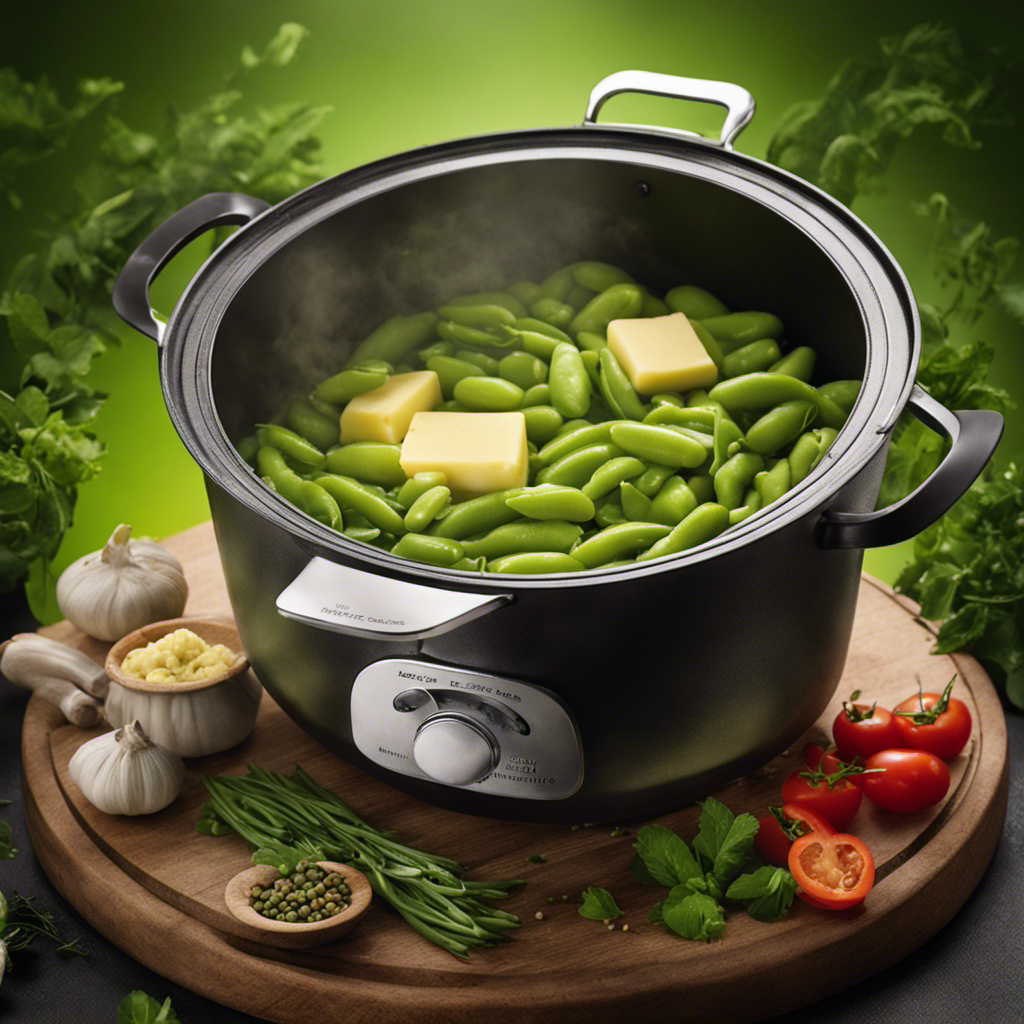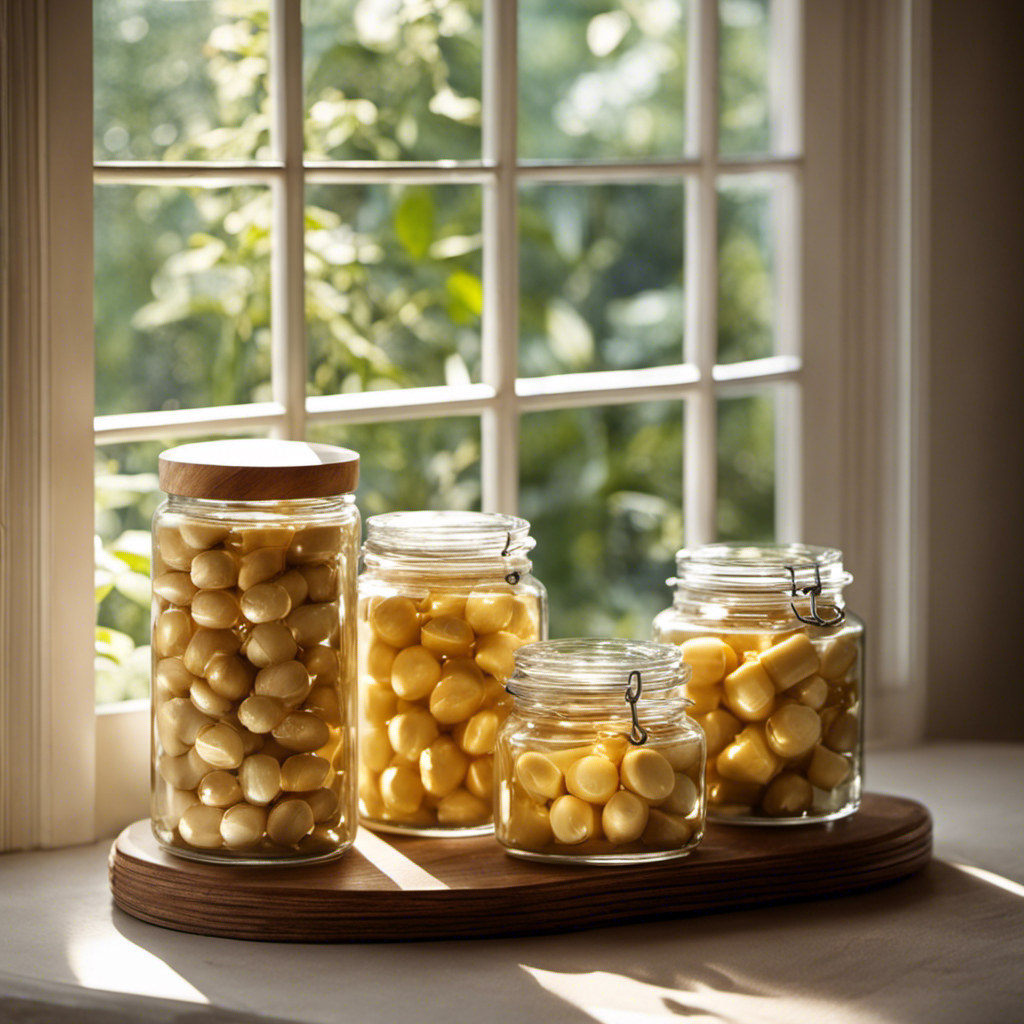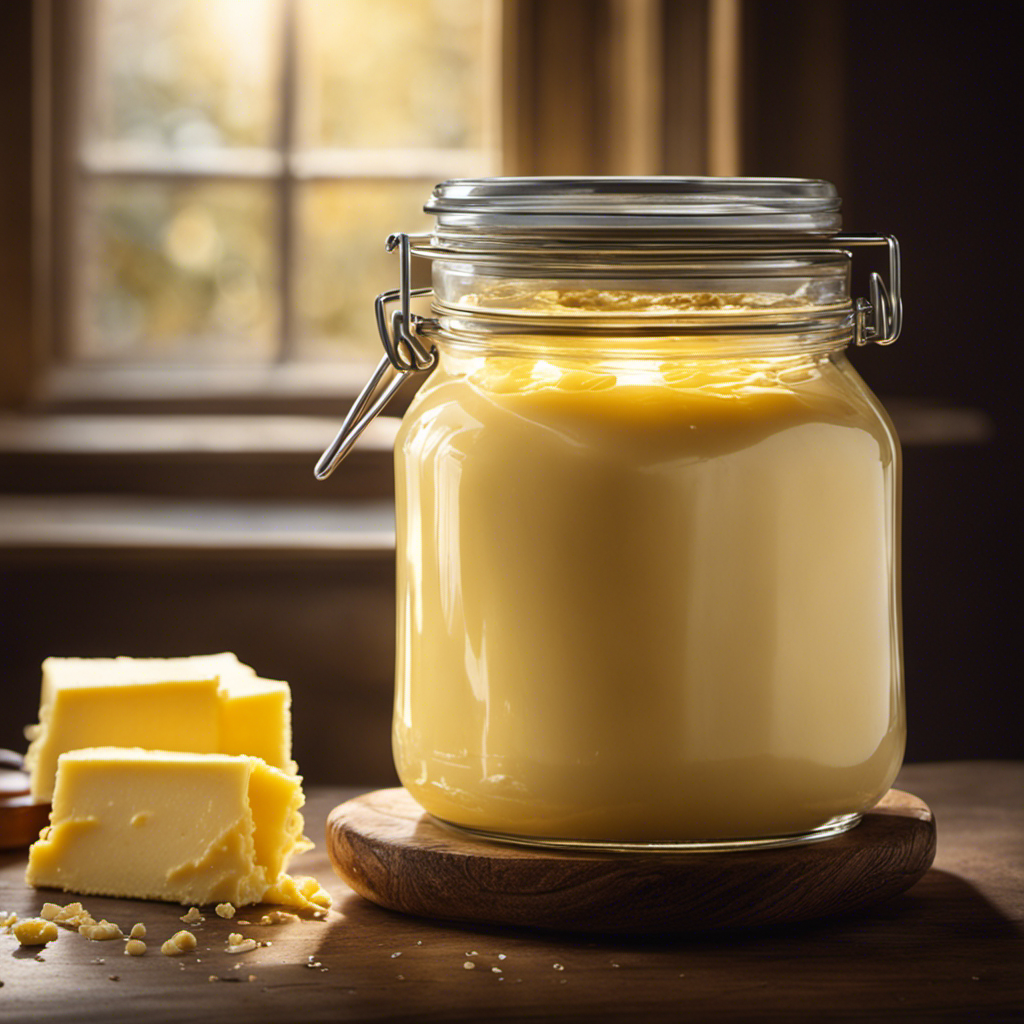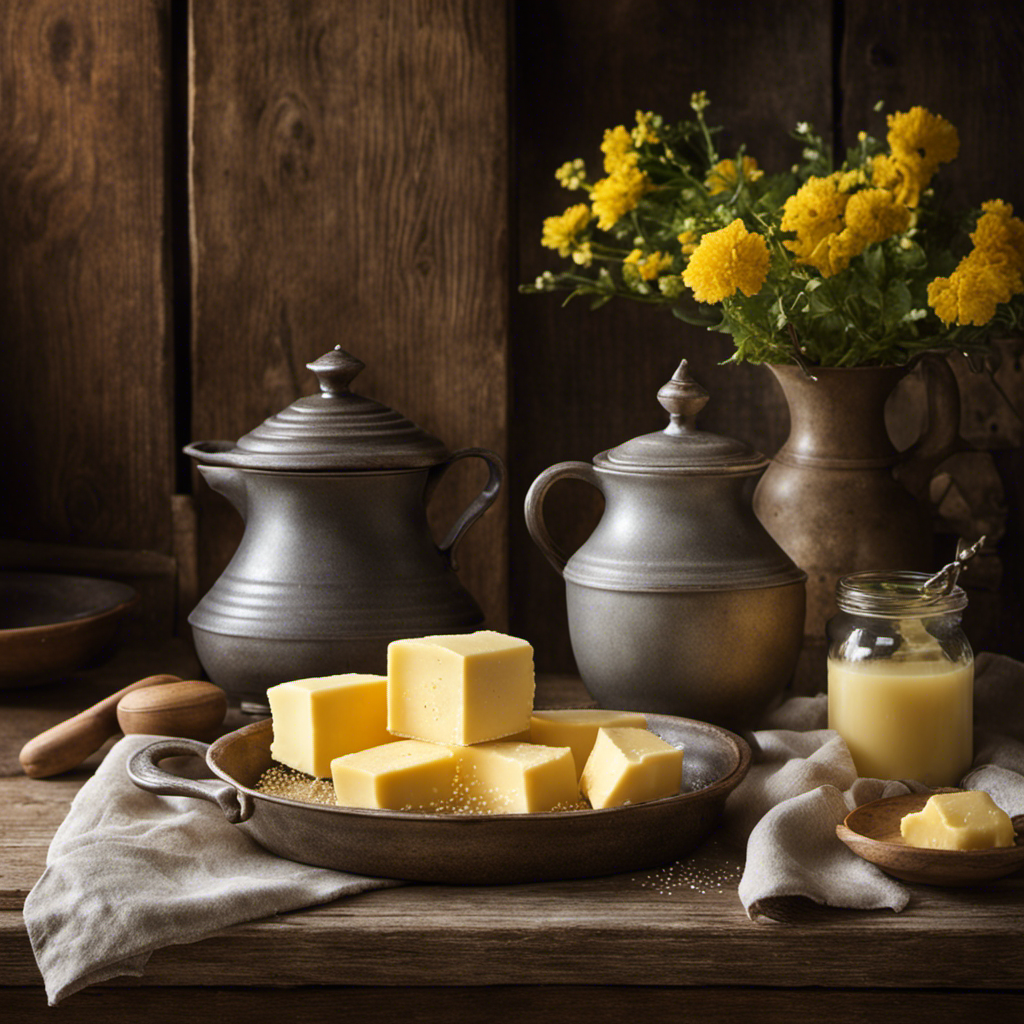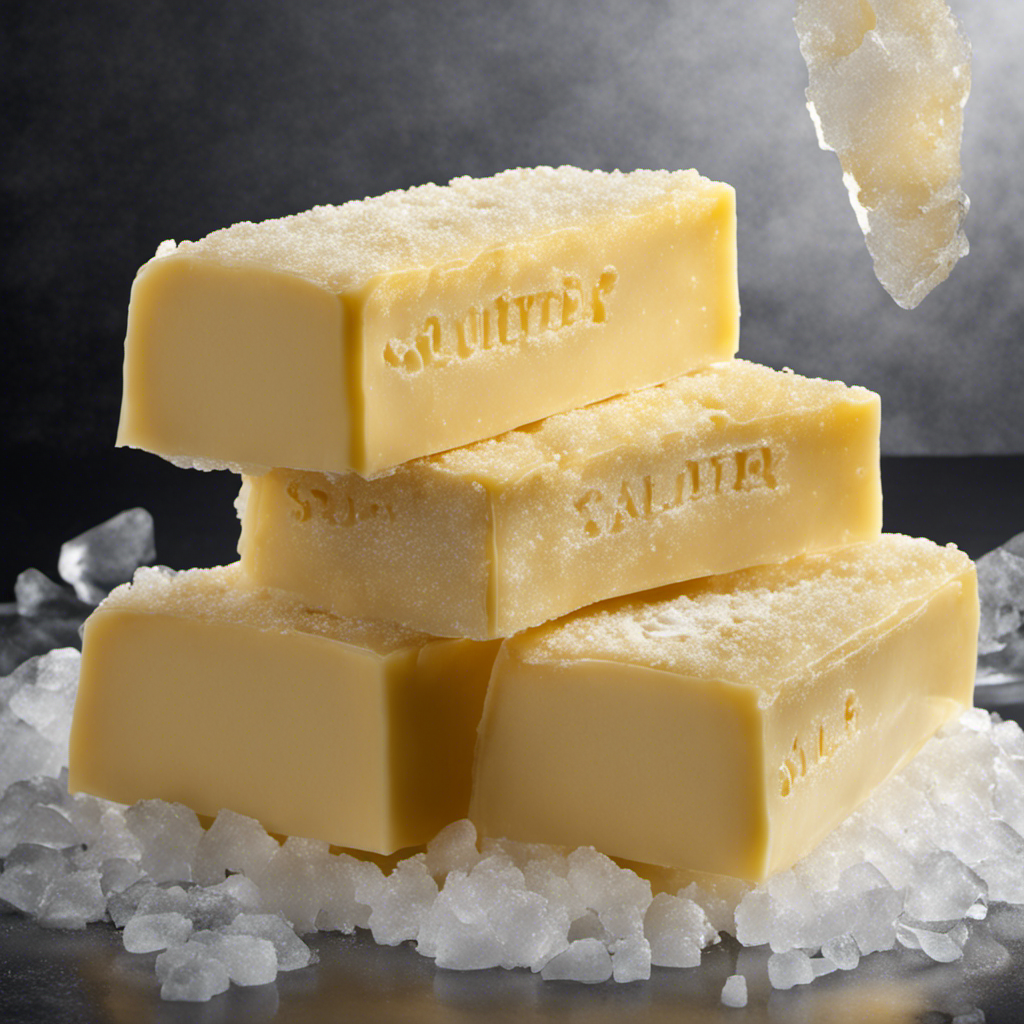Like they say, “Time is important!” When it comes to cooking frozen butter beans, understanding the correct cooking time is essential.
In this article, I’ll guide you through the process of preparing and cooking these delightful legumes. From stovetop simmering to pressure cooking and even baking in the oven, I’ll provide you with the knowledge and tips needed to achieve perfectly cooked frozen butter beans every time.
So let’s get started and uncover the secrets to cooking these tender and flavorful beans!
Key Takeaways
- Rinse the frozen beans under cold water before cooking.
- Experiment with different seasonings like salt, pepper, garlic, or herbs for added flavor.
- Consider the type of butter beans being used for unique flavor profiles.
- Cooking methods include stovetop simmering, pressure cooking, or baking in the oven.
Preparing the Frozen Butter Beans
To prepare the frozen butter beans, you’ll need to rinse them under cold water. This helps remove any excess ice crystals and dirt that may be present.
Once rinsed, you can cook the beans according to your preferred method. The cooking time for frozen butter beans can vary depending on the desired texture. If you prefer the beans to be softer, you may need to cook them for a longer period of time. On the other hand, if you like them to have a slight bite, a shorter cooking time would be suitable.
As for seasoning options, you can add salt, pepper, garlic, or even herbs like thyme or rosemary to enhance the flavor of the beans. Experiment with different seasonings to find your favorite combination.
Choosing the Right Cooking Method
When deciding how to prepare them, it’s important to consider the right cooking method for butter beans.
There are different types of butter beans, such as baby lima beans and Fordhook lima beans, each with their own unique flavor profiles. Baby lima beans have a delicate, buttery taste, while Fordhook lima beans have a slightly nutty flavor.
To enhance the taste of cooked butter beans, you can season them with ingredients like garlic, onion, herbs, or even bacon. Adding a touch of acidity, such as lemon juice or vinegar, can also brighten the flavors.
Now that we know how to choose and season butter beans, let’s move on to the next section about cooking frozen butter beans on the stovetop.
Cooking Frozen Butter Beans on the Stovetop
Now that we’ve covered choosing and seasoning butter beans, let’s explore how to cook them on the stovetop when they’re frozen.
Cooking frozen butter beans on the stovetop is a straightforward process that requires minimal effort. To begin, place the frozen beans in a pot and add enough water to cover them completely. You can also add your choice of seasonings, such as salt, pepper, garlic powder, or even a bay leaf for extra flavor.
Bring the water to a boil, then reduce the heat to low and let the beans simmer for about 30 minutes. Check for tenderness by tasting a bean after this cooking time. If they are not yet tender, continue simmering for an additional 10 minutes and check again.
Once the beans are cooked to your desired tenderness, drain them and they’re ready to be enjoyed.
Now, let’s move on to using a pressure cooker for frozen butter beans.
Using a Pressure Cooker for Frozen Butter Beans
If you’re looking for a quicker way to prepare butter beans, try using a pressure cooker. It’s a fantastic tool that can significantly reduce cooking time while still producing tender and flavorful beans.
Here are some tips for using a pressure cooker to cook frozen butter beans:
-
Rinse the beans: Before cooking, it’s essential to rinse the frozen butter beans under cold water to remove any ice crystals or debris.
-
Seasoning: Add your desired seasonings to the pressure cooker. Popular options include salt, pepper, garlic powder, onion powder, and bay leaves. Experiment with different flavors to find your favorite combination.
-
Cooking time: Set the pressure cooker to high pressure and cook the beans for about 15-20 minutes. The exact time may vary depending on the size and brand of your pressure cooker.
-
Natural release: After cooking, allow the pressure to release naturally for about 10 minutes before releasing any remaining pressure manually.
Using a pressure cooker for frozen butter beans is a convenient and efficient method that yields delicious results in a fraction of the time.
Baking Frozen Butter Beans in the Oven
Baking frozen butter beans in the oven is a simple and convenient way to achieve a crispy and flavorful side dish. It requires minimal effort and yields delicious results. To roast frozen butter beans, preheat your oven to 425°F (220°C). Spread the beans evenly on a baking sheet lined with parchment paper. Drizzle them with olive oil and sprinkle with your favorite herbs and spices. I like to use garlic powder, paprika, salt, and pepper. Roast the beans for about 20-25 minutes, or until they are golden brown and crispy. The high heat of the oven helps to bring out the natural sweetness of the beans while creating a delightful crunch. Here is a table to summarize the process:
| Step | Instructions |
|---|---|
| 1 | Preheat oven to 425°F (220°C) |
| 2 | Spread beans on baking sheet |
| 3 | Drizzle with olive oil |
| 4 | Sprinkle with herbs and spices |
| 5 | Roast for 20-25 minutes |
Give this method a try and enjoy the irresistible taste of roasted butter beans with a hint of herbs and spices!
Frequently Asked Questions
Can I Cook Frozen Butter Beans Without Thawing Them First?
Yes, you can cook frozen butter beans without thawing them first. Cooking time may vary, but a general rule is to simmer them for about 30-40 minutes. Here are some tips and tricks for cooking frozen butter beans.
Can I Add Salt to the Cooking Water for Frozen Butter Beans?
I always add salt to the cooking water for frozen butter beans. It enhances the taste and helps to season them evenly. The beans absorb the salt while cooking, resulting in a more flavorful and satisfying dish.
How Can I Prevent Frozen Butter Beans From Becoming Mushy?
To prevent frozen butter beans from becoming mushy, it’s important to use the best cooking methods. By simmering them gently in salted water and not overcooking, you can maintain their texture and enjoy delicious beans.
Can I Season Frozen Butter Beans With Spices or Herbs While Cooking?
Yes, you can season frozen butter beans with spices or herbs while cooking. The cooking time will depend on the method used, but adding seasoning enhances the flavor and makes them even more delicious.
Can I Use Frozen Butter Beans in Salads or Other Cold Dishes?
Using frozen butter beans in hot dishes is a great way to add texture and flavor. To prepare them for salads, blanch them in boiling water for a few minutes, then shock them in ice water to retain their bright green color.
Conclusion
In conclusion, cooking frozen butter beans can be a delicious and nutritious addition to your meals. Whether you choose to cook them on the stovetop, in a pressure cooker, or in the oven, the key is to properly prepare and cook them to ensure they are tender and flavorful.
While some may argue that frozen butter beans are not as tasty as fresh ones, the cooking methods provided in this article will help retain their natural flavors.
So go ahead, give these cooking methods a try and enjoy a hearty dish of butter beans!
